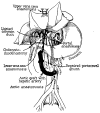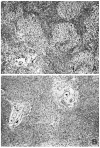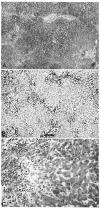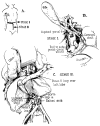Homotransplantation of the liver
- PMID: 4963511
- PMCID: PMC2967355
- DOI: 10.1097/00007890-196707001-00003
Homotransplantation of the liver
Abstract
The feasibility of hepatic homotransplantation has been clearly established in principle inasmuch as several animals are still alive almost 3 years after complete hepatectomy and liver replacement. Both orthotopic and auxiliary operations are complicated surgical techniques. Nevertheless, the results in dogs are comparable to those which can be obtained with homotransplantation of the kidney.
In man the problem is more difficult. In patients who have a need for such operations, there is invariably a metabolic disorder more complex than that caused by renal failure. In addition, the new organ must function efficiently from the beginning since its complete functional failure leads to death within a few hours. There is no recourse to an artificial liver to maintain life until the reversal of an injury which is caused by either ischemia or rejection.
Nevertheless, research of several kinds may soon make possible the successful use of hepatic transplantation procedures for the definitive treatment of human liver disease as exemplified by the reports in this symposium concerning new techniques of organ preservation, histocompatibility analysis, and immunosuppression.
Figures








References
-
- Absolon KB, Hagihara PF, Griffin WO, Jr, Lillehei RC. Rev Int Hepat (Lyon) Tome. 1965;15:1481. - PubMed
-
- Demirleau Noureddine, Vignes Prawerman, Reziciner Larraud, Louvier Med Acad Chir (Paris) 1964;90:177. - PubMed
-
- Fonkalsrud EW, Shafey OA, Ono H, Longmire WP., Jr S Forum. 1966;17:215. - PubMed
-
- Kountz SL, Williams MA, Williams PL, Kapros C, Dempster WJ. Nature (London) 1963;199:257. - PubMed
MeSH terms
Substances
Grants and funding
LinkOut - more resources
Full Text Sources
